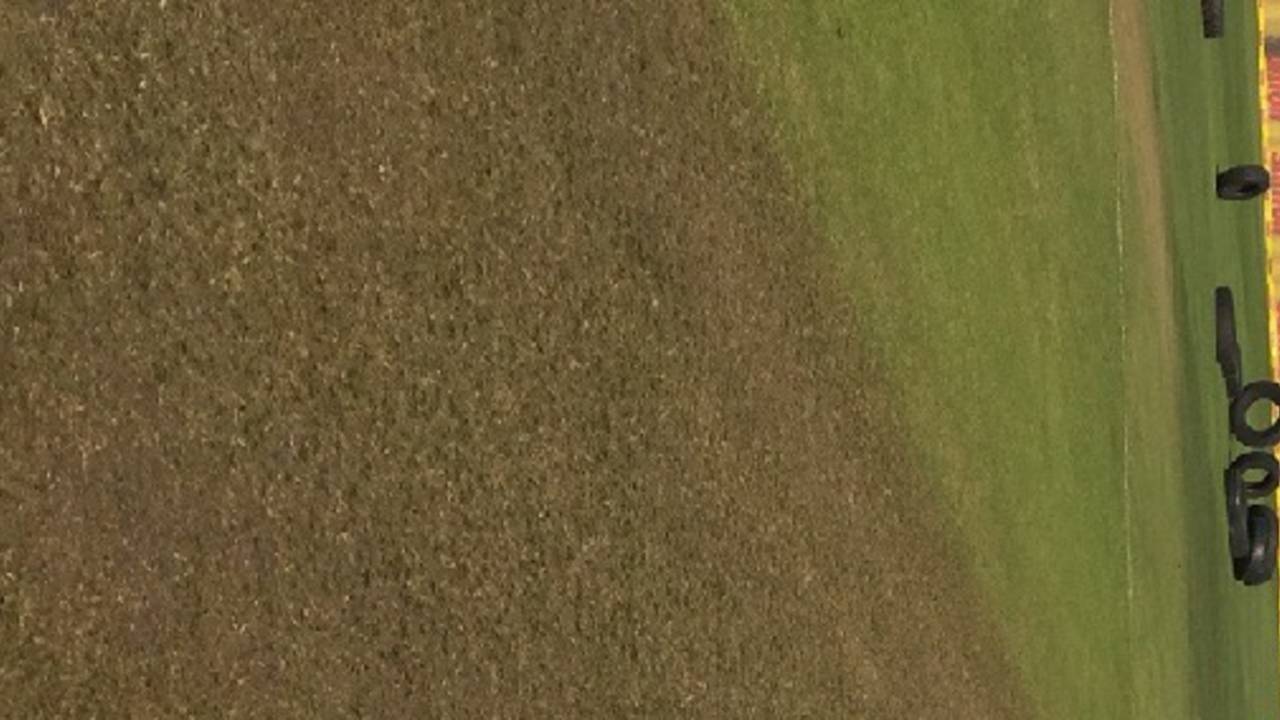While all eyes are on the pitch for Durban's first-ever Test match in August, peripheral vision will move to the outfield which has failed to recover completely since being relaid last month.
After a
limited-overs series between both teams last year, members of both sides had complained about the condition of the outfields in Durban and Centurion. They found the ground uncomfortable because it was too hard and asked if something could be done to soften it ahead of this year's Test series. CSA agreed to decompact the outfield at both venues, which essentially involves removing sand and grass and relaying it. However, the process took place too late in Durban and the outfield was too deeply dug up to be ready in time for the Test. As a result, the outfield is an eyesore: patchy with several areas of scant grass and significant sand.
"The digging happened too deep and too late and that's why it looks the way it does now," an insider told ESPNcricinfo. "Overall, it may be softer, but it's definitely not pristine."
Work was done at SuperSport Park as soon as the season ended in April, but could not get underway in Kingsmead at the same time because it is the end point of the Comrades Marathon, which was run on May 29. "There would have been no point doing it when you are just going to have 18,000 runners' feet on the ground a few weeks later," the source said.
Instead, the process only began in mid-June and was completed by July 1, seven weeks before the Test. More than 40 tonnes of sand and grass were removed from the outfield and new grass was grown. "It was a bit of a gamble to start that late, but they thought with the warmer climate, the outfield would recover and it was on its way."
At the end of July, Durban was hit by severe floods, and the outfield "was like a lake." Since then, intermittent drizzle and insufficient sunshine, partly caused by the shadow the grandstand casts over part of the outfield at this time of the year, did not allow the grass to grow as much as it should have.
While this will have no impact as such on the pitch, which had a significant grass covering on it the day before the match, it could still play a part in the Test. On rougher ground, the ball will scuff up quicker which may assist in getting reverse-swing.
